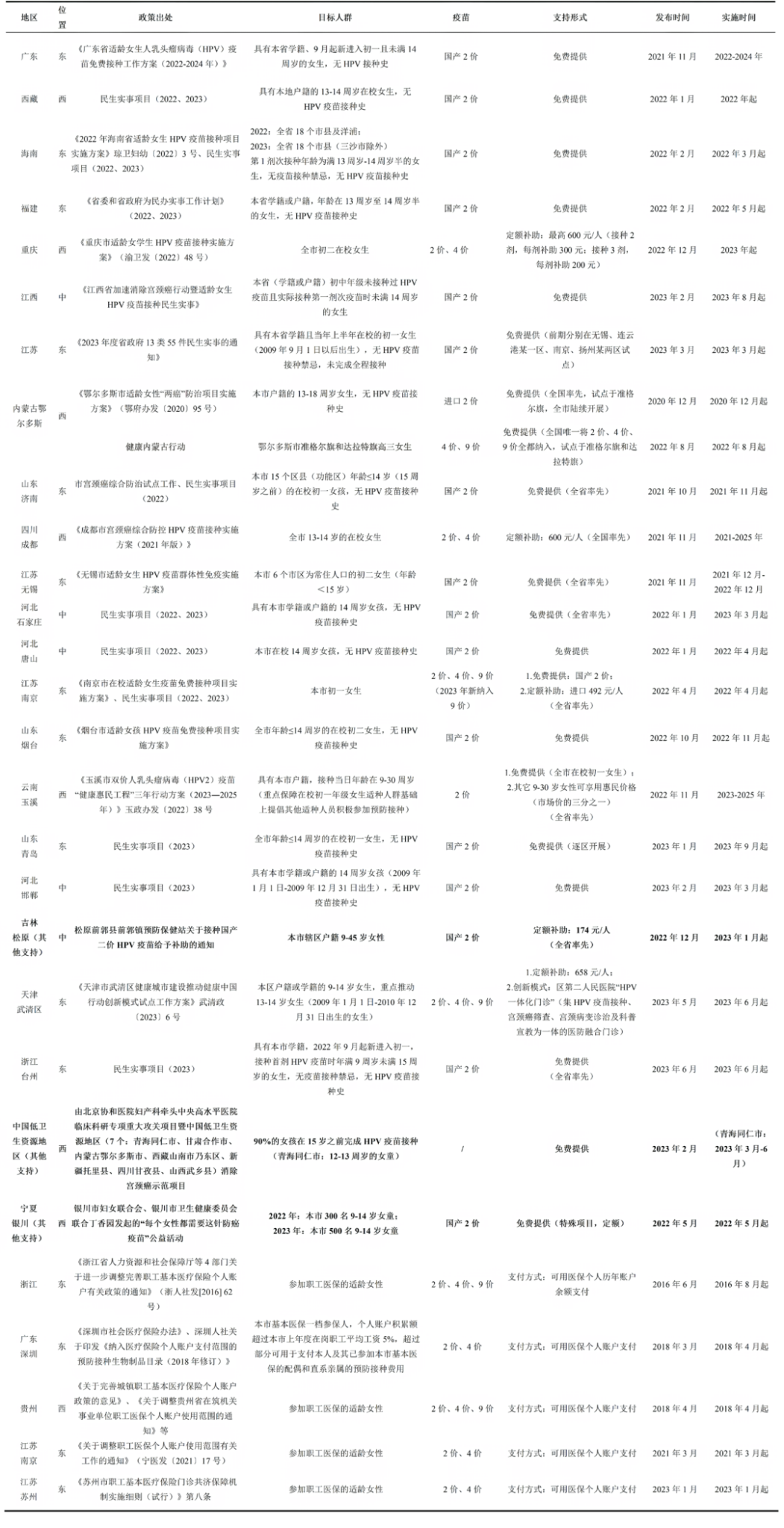Global/National Policy Updates
01
Pharmaceutical companies prohibit dealing in vaccines
The State Administration of Market Regulation announced the “Quality Assurance Regulation for Supervision and Administration of Drug Business Operation and Use” (henceforth referred to as “Regulation”) came into force on January 1st. The “Measures” established and put into effect a drug traceability system, which prohibits drug business enterprises from selling drugs such as vaccines, preparations for medical institutions, and Chinese medicine granules. The Measures further clarify the division of responsibilities of the drug regulatory authorities at all levels, defining the responsibility of cross-region supervision, enriching the administrative measures, and clarifying the requirements for the convergence of the execution of criminal discipline to ensure the full implementation of the regulatory responsibility.
https://www.samr.gov.cn/zw/zfxxgk/fdzdgknr/fgs/art/2023/art_db526cfcd7204874b8b23297fa3b02dc.html
02
Guangdong Province issues a non-immunization-programme vaccination plan (2024 version)
The Guangdong Provincial Center for Disease Control and Prevention (GDCDC) took the lead in revising the “Guangdong Non-Immunization-Programme Vaccination Plan” (2023 Edition) to form the 2024 Edition. Compared with 2023, the vaccination programs for the influenza vaccine, human papillomavirus (HPV) vaccine, human rabies vaccine, and herpes zoster vaccine have been adjusted accordingly.
https://wsjkw.gd.gov.cn/gkmlpt/content/4/4325/post_4325076.html#2532
03
First domestic oral trivalent recombinant live attenuated rotavirus vaccine approved for marketing
The oral live attenuated trivalent reassortant rotavirus vaccine (Vero cell) independently developed by Sinopharm’s Lanzhou Institute of Biological Products has gained lot release from China National Institutes for Food and Drug Control (NIFDC) and will soon be distributed for vaccination nationwide. The vaccine is highly effective against rotavirus diarrhea in infants and young children, contributing immensely in reducing severe diarrhea, and infant mortality, marking significant progress in the research and development of rotavirus vaccine in China.
https://www.workercn.cn/c/2023-12-30/8097593.shtml
04
Beyfortus approved in China for the prevention of RSV disease in infants
The first respiratory syncytial virus (RSV) prophylaxis for all infants, Levitra®/Beyfortus (nisevizumab injection), a long-acting monoclonal antibody jointly developed by Sanofi and AstraZeneca, has been formally approved for marketing by the National Medical Products Administration (NMPA) of China and is expected to be available in China during 2024-2025. It is anticipated to be accessible in China in time for the RSV infection season of 2024–2025. With a single injection, it can provide timely, rapid, and direct immunoprotection against RSV-induced lower respiratory tract infections for all infants (healthy/special health status, full-term/premature, born inside and outside of the season of infection).
Journal Content Recommendation
05
Access to DTP-Based Combination Vaccines in Asia–Pacific Countries between 2019 and 2022
Vaccines published a paper online describing the accessibility trends of combined vaccines based on
DPT in 10 Asia-Pacific countries from 2019 to 2022. The findings indicate that significant differences in vaccination accessibility, affordability, and accessibility vary widely among Asia-Pacific countries, with higher level indicators seen in countries with stronger economies and health systems. Due to the COVID-19 pandemic, vaccine accessibility fluctuated significantly in lower-income countries, with “DTP coverage rates falling by more than 14% in the Philippines and Indonesia between 2019 and 2021.” In terms of availability and affordability, “ Singapore and Malaysia from high-income groups were largely affected”. This study recommends a greater focus on routine immunization programs and national health expenses to improve vaccine disparities and increase the robustness and resilience of the vaccine supply chain in the event of public health emergencies.
https://doi.org/10.3390/vaccines12010033
06
Modelling the population-level benefits and cost-effectiveness of cell-based quadrivalent influenza vaccine for children and adolescents aged 6 months to 17 years in the US
Expert Review of Vaccines published a modelling study for the cost-effectiveness and impacts on health outcomes of Cell-based quadrivalent influenza vaccines (QIVc). A dynamic age-structured susceptible-exposed-infected-recovered model was used to simulate influenza transmission in low and high incidence seasons for two scenarios. Extension of QIVc to children resulted in 3-4% reductions in cases, hospitalizations, and deaths at a population level in a high incidence season, and 65% reductionsin a low incidence season. Use of QIVc instead of QIVe in children > 6 months of age in the US would reduce the disease burden and be cost-saving from both a payer and societal perspective.
https://doi.org/10.1080/14760584.2023.2295014
07
Utilization of Immunization Information Systems (IIS) among independently owned community pharmacies: A national survey
A cross-sectional study of pharmacists, pharmacy owners, and pharmacy technicians from the National Community Pharmacists Association assessed independently owned community pharmacies’ IIS enrollment, verification of immunization needs through IIS record retrieval, and immunization records reported to the IIS following changes in community pharmacy operations during a pandemic. The study discovered that while pharmacy enrollment and record reporting were high, record retrieval rates were suboptimal, stating that future work “should focus on addressing suboptimal retrieval rates within immunization-providing pharmacies”.
https://doi.org/10.1016/j.vaccine.2023.12.040
08
Coverage with Influenza, Respiratory Syncytial Virus, and Updated COVID-19 Vaccines Among Nursing Home Residents — National Healthcare Safety Network, United States, December 2023
On December 22, 2023, the U.S. Morbidity and Mortality Weekly Report published a study assessing COVID-19, influenza, and respiratory syncytial virus (RSV) vaccination coverage among nursing home residents during the 2023-24 respiratory virus season. As of December 10, 2023, “33.1% of nursing home residents were up to date with vaccination against COVID-19.” Among nursing homes reporting outcomes (20.2% and 19.4% reporting rates, respectively), influenza and RSV vaccine coverage rates were 72.0% and 9.8%, respectively. “Vaccination varied by U.S. Department of Health and Human Services region, social vulnerability index, and facility size.” The study calls for an urgent and immediate need to increase COVID-19 and influenza vaccinations, discussing RSV vaccination with eligible residents to protect them from the serious threat of respiratory disease during the ongoing 2023–24 respiratory virus season.
http://dx.doi.org/10.15585/mmwr.mm7251a3
09
Can non-individual factors be associated with mothers’ intention to complete childhood immunization? Findings from a cross-sectional study in Nigeria
A cross-sectional study conducted in Nigeria looked into non-personal factors that affected mothers’ willingness to complete full immunization of their children between the ages of 0 and 2 years. The results demonstrated that 100% of moms were willing to receive all recommended vaccinations, as mothers’ willingness to complete their child’s vaccinations was not significantly correlated with environmental or interpersonal factors, but associated with policy issues. It is advised that “continuous encouragement of mothers through policy-level mechanisms should continue,” to aid complete childhood immunization to maintain the health and well-being of mothers and children.
https://doi.org/10.38029/babcockuniv.med.j..v6i2.305
10
A Cross-sectional study on Out-of-Pocket expenditure towards Immunization and its consequences faced by families with under-five Children Residing at one of the Cities of Western India
A cross-sectional study conducted in a city in western India assessed factors influencing household preferences for the type of immunization service for children under 5 years of age, estimated out-of-pocket expenditures for immunization of children under 5 years of age, and explored participant perspectives on avoiding or reducing out-of-pocket costs for immunization. The study found that determinants like “child’s gender, parents’ education, Type of family, Socio-economic status, delivery place of child and occupation of father” were statistically associated with preferred vaccination sites.
https://www.iapsmupuk.org/journal/index.php/IJCH/article/view/2616





